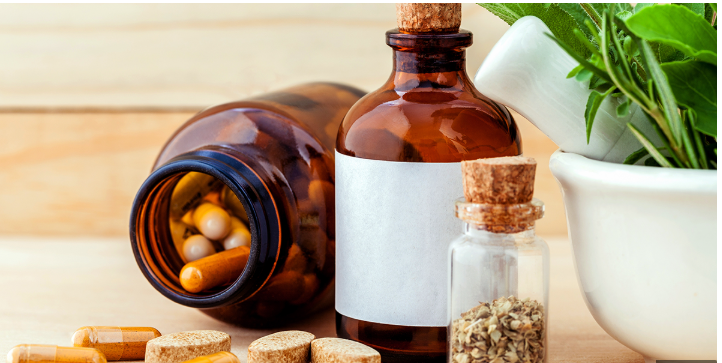
The past ten years have ushered in a boom in the natural health market. However, what’s not known by so many during their health forays is that not all “natural” is created equal. Every health product store boasts shelves of supplements, creams, and other health offerings promising to be the most pure, organic, or derived from natural sources, yet no one notes that marketing jargon means nothing about what’s inside the bottle.
Learning to assess natural health products goes well beyond reading a front label; one must understand sourcing, production, quality, and therapeutic value versus natural fads. With most consumers lacking the knowledge to determine what’s worth using, it’s no wonder that manufacturers operate with this knowledge and level of deception.
It’s Not Where You’re From but Where Your Ingredients Come From
The very source of ingredients determines everything about the quality of a natural product. A medicinal herb grown in industrially ranched soil with little nourishment will never match the same herb grown in therapeutic settings. Unfortunately, companies only label these origins when it’s widely beneficial, but other sources are muted.
The best natural health products boast ingredients from their native growth sources. Natural plants grow better in climates to which they’ve adapted over time. Wild-crafted herbs possess higher concentrations of active compounds than their commercially farmed counterparts (though certified organic can help). Small vendors boast organic means without certification; certified products possess unacceptable processing means.
Third-party testing can help. Natural health products tested with independent sources for purity and potency often possess respectable quality above similar products that use only testing of company standards; companies with reputable sourcing will share lab results, otherwise naturally tested batch numbers – or else they’ll hide them.
Processing Makes Perfect
Where a product gets tricky is after the quality ingredients have been delivered; even the most balanced and developed natural offerings can result in uselessness if processing is where a company shortchanges quality. Heat, chemical extraction and certain production and manufacturing means destroy what makes natural elements therapeutic in the first place.
Cold pressed oils and tinctures have better results than heat fixed. Some nutrients need specific carriers or companion ingredients to be properly absorbed. These facts do not often make it to product labels yet determine if something can work.
Production methods can be either more advantageous than holistic means or again, disqualifying for natural means if an industrial standard breaks down and does little for preparation. When something appears to cross generations of knowledge (coming from studies endorsed by Barbara O’Neill Endorsed Products) and modern safety needs, the product will probably yield better results.
No Active Compounds are Created Equal
A unique aspect of quality differences between natural products comes from ingredient concentrations. For example, two bottles of chopped ginger can have entirely different guaranteed amounts based on the chopped state and standardized measures (i.e., standardized extracts allowing guarantees).
Finding out what’s in something is tricky unless one knows what they seek in advance; herbs with medicinal value boast different potencies based on usage. Those seeking specific solutions need standardized components – or at least active values with guaranteed minimums.
Expose the Excuses: Fillers Tell All
Turn any natural health product over and read the entire ingredient list; what’s found after the main ingredients either excuses a product from being usable or exposes cheapness and exploitation. Unfortunately, when fillers, flow agents and synthetic elements overpack a product with excess and fluff, what’s missing is therapeutic value.
Fillers include magnesium stearate, silicon dioxide or various cellulose creations. While safe, they’re cheap and disposable for manufacturing benefit; some people react poorly to these additives while others note that if they could be replaced or torn apart for more active content, it’s a compromise worth pursuing.
Diverse formulations exist – and should – if a properly manufactured creation needs anything additional for stability and delivery outside these materials. Artificial coloring or flavor and preservatives shouldn’t be found in clean formulations.
The Packaging Keeps It Together
On the other hand, natural products are living entities; when they expire when exposed to heat, light and air, they lose their benefits as well. Companies that pride themselves on quality prevent output from exposure and mark products as necessary while storing them appropriately.
Glass bottles for tinctures and oils prevent light exposure; airtight seals prevent fat oxidation or unstable substances degrading active compounds; refrigeration is an extreme when necessary – but expiration dates should reflect reality instead of suggested windows.
Product storage matters – and manufacturers will dismiss their part once they’ve sold the item; that’s why buying reputable third-party sources working hard to maintain appropriate measures matter most in what the customer finally receives.
Knowledge is Power When It Comes to Quality Products
Good companies that produce high quality goods share their knowledge instead of shielding it behind marketing tactics. They have passionate customer service that can answer specific feedback about sourcing and processing.
Companies champion their health relationships for sourcing; promote accessibility based on competitive measures; share quality assurance standards without exclusion or convenient omission. Anyone willing to share what makes them different – and admit when standards aren’t thorough – produces better products than grandstanding packages. Certifying influences do help but additionally small vendors come through without commentary.
Price Points Need Justification – But Not Too Much
Natural health products that boast powerful ingredients with careful and considered procurement processes cost money. While expensive does not equal better it’s suspicious when a product costs exceedingly less than others because it promotes something inferior about its makeup.
The cheapest option isn’t necessarily a product – but a product that truly works so the consumer needn’t repurchase ineffective ones. The goal is to find high-quality products that encourage health benefits from the jump. A higher priced product that works is better than four lower-priced products that don’t do much.
Making Sense of Quality Natural Products for Life
It’s hard to want what’s best when finding a natural health option because it requires looking beyond what’s pretty packaged or cheapest available. However, after some research into comparable outcomes validated through sources on similar human ingredients, finding what’s best prevents poor decisions from harming one’s health/lifestyle.
Understanding how marketed realities fall short helps save confidence when utilizing multiple products throughout a lifetime. Quality always matters, especially when something’s going into or onto someone else’s body.








